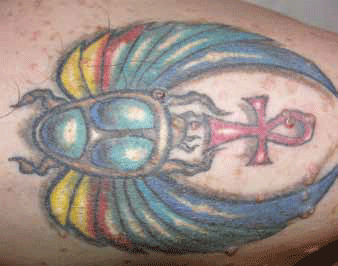
Figure 1. Papules on the tattooed skin of the patient
Question 1
What is the most likely diagnosis?
Question 2
What differential diagnoses would you consider?
Question 3
What is the mechanism of transmission in this case?
Question 4
What are the most frequently observed infections transmitted by tattooing?
Question 5
What noninfectious dermatoses can occur as a result of tattooing?
Question 6
What are the treatment options for this infection?
Answer 1
These lesions have the typical appearance of Molluscum contagiosum, a common skin infection caused by a poxvirus. M. contagiosum virus (MCV) presents as small, umbilicated, skin coloured pearly papules with a predilection for the trunk, axillae, antecubital and popliteal fossae and genital area. It is one of the most common viral infections affecting the skin. Its incidence is stable among children, but has significantly increased in adults, predominantly due to HIV infection.1 M. contagiosum on tattooed skin has been previously reported in the medical literature.2,3
Answer 2
Differential diagnoses include viral warts, pyogenic granuloma, nonmelanotic melanoma, basal cell carcinoma and adnexal tumours. In immunocompromised patients, fungal infections such as histoplasmosis, cryptococcosis and penicilliosis can have a similar appearance. A skin biopsy should be performed if there is any doubt, but this was unnecessary in this case study.
Answer 3
The lesions shown in Figure 1 are grouped linearly, which suggests that the Koebner phenomenon (or 'isomorphic response') is at play. This refers to skin lesions that appear on the skin surface due to trauma. The Koebner phenomenon can occur in the setting of other viral infections (eg. viral warts), as well as in noninfectious skin conditions such as psoriasis, lichen planus or vitiligo.
In this case, the MCV may have been transmitted via the instruments used for tattooing, or (less likely) by contaminated ink or water used to dilute the ink. Transmission of MCV commonly occurs during direct contact with skin or mucosae, but it can also be transferred via towels or clothing. An association of MCV with swimming pool use has been reported.4
Answer 4
The most frequently observed infections transmitted via tattooing are syphilis, tuberculosis, atypical mycobacteria such as Mycobacterium chelonae and M. fortuitum, hepatitis and viral warts;5 HIV transmission can also occur.
Answer 5
The types of noninfectious dermatosis associated with tattooing include allergic contact dermatitis, lichenoid dermatitis, photo-induced reactions and sarcoid-like granulomatous or pseudolymphomatous reactions.6
Answer 6
Most MCV papules resolve spontaneously. However, treatment may be requested when there are numerous or cosmetically significant lesions. There are several treatment options, including:
- liquid nitrogen
- topical keratolytics
- potassium hydroxide 5–10% in aqueous solution7
- imiquimod 5%.8
Another option is to simply prick the lesions with a sterile needle and gently express the central core, which also provokes an immune response leading to faster resolution.
The patient should avoid swimming in pools and communal bathing until the lesions have resolved to avoid spreading the virus to others.
Conflict of interest: none declared.
References